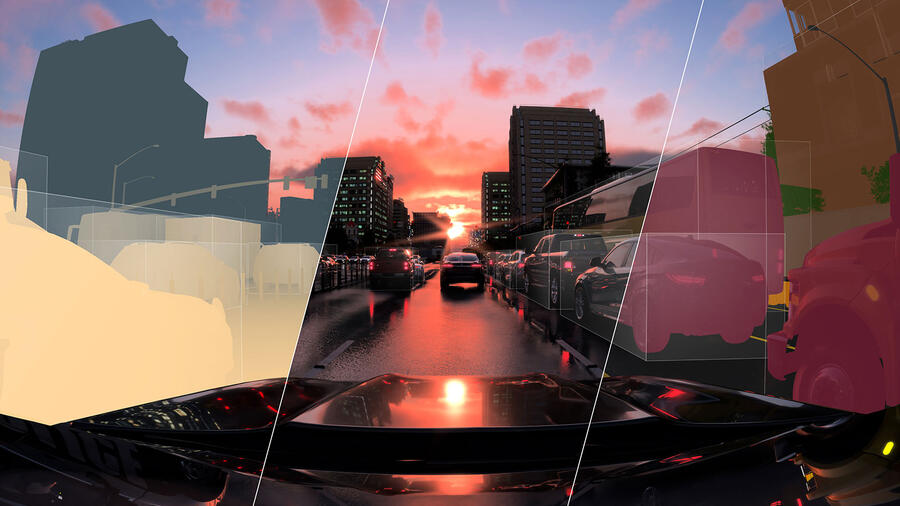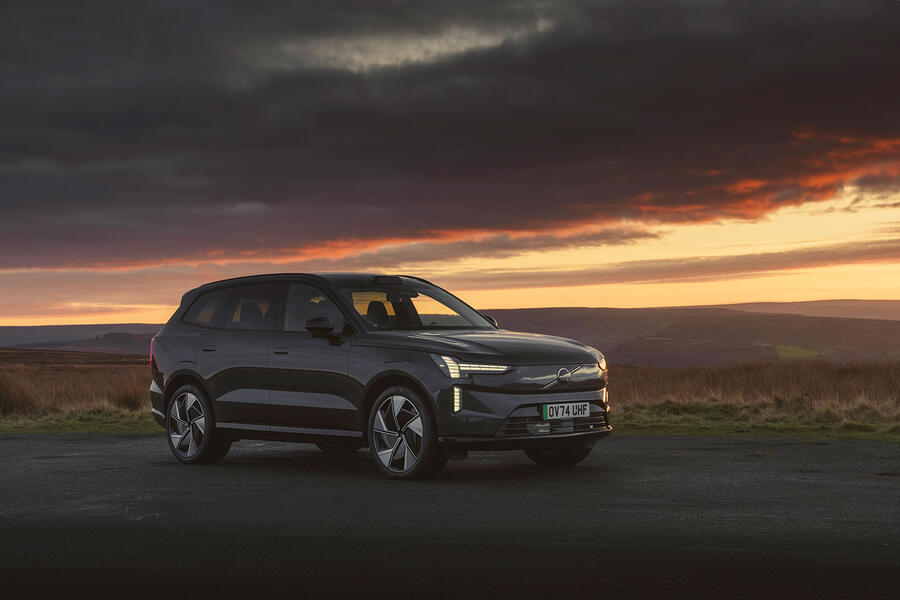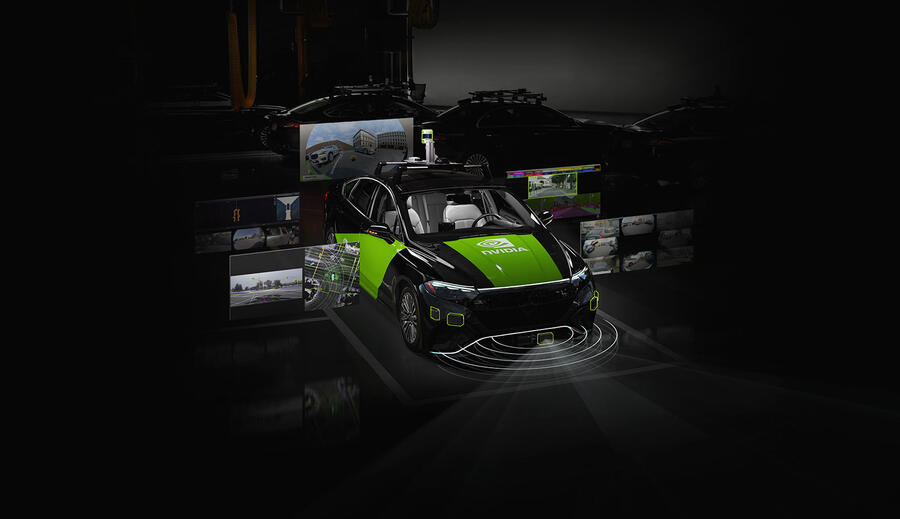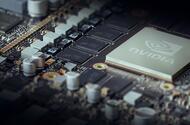Nvidia’s hardware is used buy several big-name car makers
£2.7 trillion US tech giant Nvidia’s new on-board computer could reshape the future of motoring
If you pay any attention to the world of tech or the stock market, you’ve probably heard of Nvidia.
And if you haven’t, you will definitely know car firms that use the American tech giant’s hardware or software in some capacity: Tesla, Volvo, JLR, Mercedes-Benz, BYD, Hyundai and more.
Basically, in the coming era, when TOPS (tera operations per second, a measure of how fast a computer chip can process data) might be as key to a car as BHP or MPG, Nvidia is becoming a major player in the automotive industry and is the dominant force in an emerging field – so you absolutely should care about it.
With huge processing power being required for autonomous vehicles, automotive is shaping up to be very big business for Nvidia: around $5 billion (£4.1bn) annually, if you include related services.
But as its automotive vice-president and general manager, Ali Kani, tells me at the CES tech event in Las Vegas, “less than 10% of the market today” offers even level-two (so semi-autonomous) functions. It’s easy to do the maths.
Nvidia was founded in 1993 to build graphics processing units (GPUs) – the chips that make it possible for PCs and games consoles to have fancy graphics.
And because they need the power to process vast amounts of data for 3D effects, GPUs have also turned out to be incredibly well suited to the sort of advanced computing required for artificial intelligence (AI) – an area in which Nvidia has a real edge.
That’s why its share price has skyrocketed in recent years, such that it is now worth $3.3 trillion (£2.7tn). Yes, trillion.
Nvidia’s arrival in the automotive industry was almost an accident, with early clients such as Audi sourcing its chips to power their infotainment systems.
“Car screens need a lot of graphics and car makers wanted them to look beautiful,” recalls Kani. “We were really good at graphics and we built chips you could use in a car. That was the beginning. But then we realised that self-driving cars were coming.”
To operate naturally, self-driving cars need lots of AI computing, so you can see why Nvidia is interested in this area.
Autonomous vehicle tech development requires “a tremendous amount of deep learning”, says Kani. “
You also need to train models in the cloud [meaning computing services performed elsewhere and sent to you] and create synthetic data [simulations], because you can’t test for every event that happens in the real world.”
It was, as Kani notes, a “tremendous opportunity” for Nvidia, especially as the automotive industry moved towards ‘software-defined vehicles’ – cars designed around their digital systems, which can then be updated and refreshed over the course of their lives.
Nvidia has three main automotive products: an in-car computer (Drive AGX), cloud computers that can be used to train AI models (DGX) and simulation computers that can work through driving models (Omniverse).
It has been a learning experience. “It’s tough, because the [automotive] industry is so bureaucratic,” says Kani. “There’s a political infrastructure with so many people involved. There are negotiations with governments and unions, the board of this and the board of that.
“That whole process of decision-making is new for a tech start-up. If we think something is right to do, we go and do it.
But automotive companies say ‘let’s kick off a proof of concept’, and they will work with you for years and you think nothing is going anywhere.”
Kani admits this was “a bit of a culture shock”, but there are signs that the automotive industry is slowly changing.

Until recently, car makers would release a finished product, with any revisions coming in a future mid-life update.
But now that cars are connected, they can be continually upgraded with new software. This has changed the way car makers think about computing – a change instigated by Tesla, believes Kani.
“In the past, if firms were building a cheap car, they would use the cheapest chip they could.
“For medium cars they would use a medium-price chip, and for high-end cars they would use an expensive chip.
Then Tesla put high-performance chips in all their cars and focused on software,” he explains. “With a software-defined vehicle, you put the highest-performance computer and richest software in the car and over the life of the car keep upgrading it.”
It’s the same approach, notes Kani, that Apple takes with its iPhones. And while established car firms were slow to react to Tesla, Kani says the rise of Chinese newcomers “building really good self-driving software” has changed things: “There’s clearly a threat there. So now they’re thinking: ‘How do we make decisions faster?’”
Many car makers talk about dramatically shortening their development cycles to try to match the Chinese – but Kani says “we haven’t seen that”.
He adds: “In China, they make a new car every two years. Most [other] manufacturers are on a four- or five-year cadence. If your competition is upgrading every two years and you’re doing it once every four to five, they’re running circles around you.”
Kani notes that the first European car makers to sign up to use Nvidia’s Drive AGX Orin platform (essentially a ‘brain’ for autonomous vehicles) – Mercedes-Benz and Volvo – took several years to get the tech onto the road, whereas Chinese clients “had cars in production using it nine months later”.
Those European cars on Orin such as the Volvo EX90 are just launching now, but Nvidia rolled out the more powerful Drive AGX Thor platform in 2022, and there are cars on the road in China using it already.
“So you started at the same time, but by the time you launch your car, you’re behind on day one,” says Kani.
“When we talk to Dell, HP and Apple, they’re asking when our next computer is available, and then the launch of their next product [an iPhone, for example] is aligned to it.
“What car firms need to start thinking is ‘when is the next platform available?’ and about how they can be ready [to start working with it] on that date.”

The car industry’s shift to software-defined vehicles hasn’t been easy. Look at the challenges faced by the Volkswagen Group or delays that hit recent Volvo model launches, for example.
Kani says that was partly due to car makers being slow to realise the type of software needed for the new generation of vehicles had changed, now putting a much greater focus on machine learning.
Asked for his opinion on how car makers are managing the shift, Kani says: “Certainly they’re getting more informed. Their teams are more and more knowledgeable.
“The challenge in the short term is the shift in how to develop a software stack. In the past, the likes of Volkswagen, BMW and Mercedes would take mobilised perception software, then do fusion software separately and then planning and control separately.
“That’s no longer how you develop software: you take that perception software you were outsourcing, and now it’s an end-to-end model that does perception, fusion and planning in one model.”
To strip away the tech terminology there: car firms used to develop individual bits of software to do specific tasks on a car, but the latest super-powerful chips developed by the likes of Nvidia enable far more advanced AI systems to be run, which is what’s needed for digitally advanced and truly autonomous cars.
“It’s doubling down on the know-how that they didn’t have,” continues Kani.
“The problem is that car firms did actually learn a lot, but the type of software they have knowledge of is no longer something you want to be using in the future, so they need to hire a whole bunch of new people who can do machine learning.
“It’s harder than everyone thought. But we will do our best to help them. That’s our job: ‘let us help you with these problems’.”
On that note, Kani describes Nvidia’s relationships with car makers as partnerships, with Nvidia tailoring solutions to meet car makers’ needs using its various chips and services.
While Nvidia’s in-car package is strong, Kani says that it’s in cloud computing and simulation systems where the firm is well ahead.
Indeed, its biggest automotive partner, Tesla, is now largely using Nvidia hardware for its AI development (CEO Elon Musk said he expected to spend $3bn-$4bn on Nvidia AI hardware last year).

The big business opportunity for Nvidia comes with self-driving cars: not just the level-two-plus cars on the road today (which can operate autonomously under supervision in certain situations) but the level-four (fully autonomous) ones the industry has dreamed about for years.
Current semi-autonomous cars generally can operate only in fairly controlled environments. Kani says truly autonomous cars in chaotic urban areas require a “much more advanced software stack. There’s just so much noise and chaos, so the software needs to be richer in capability.”
Kani says that in the past year autonomous vehicle development has advanced to using Multimodal Large Language Model AI – essentially software that can process and understand multiple types of input data.
Think ChatGPT but for cars. There’s also now the need for a lot more processing power to handle the raft of sensors required for autonomous functions – not least because of the demand for a complete fail-safe back-up.
No wonder, then, that Kani admits the industry is “not close” to a true self-driving car.
And if the prospect of self-driving cars is a turn-off, know that Nvidia’s systems will have other benefits.
Those annoying emergency braking systems and lane departure warnings that go off erroneously on so many current cars? New tech should improve those.
There are also things like improved natural-language voice control, smarter park assist and cars becoming able to self-identify faults and suggest solutions.
So whether the cars are autonomous or not, expect Nvidia to emerge as an increasingly important player in the automotive industry as vehicles become ever more technical.
“For us, this market is only just beginning,” says Kani. “And it’s already a $5bn market.”
Source: Autocar
